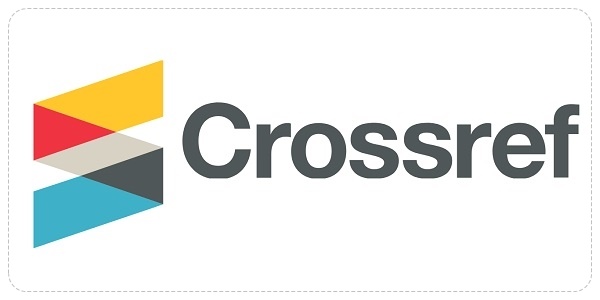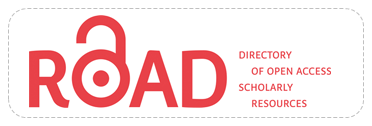Education Lecturers’ Perceived use Of Mobile Technologies for Instruction
Abstract
Keywords
Full Text:
PDFReferences
Alani, T. R. R., Obielodan, O. O., Onojah, A. O., Omotayo, A. S., Onojah, A. A., & Alasan, N. J. (2022). Relationship between sciences and education lecturers’ perceived use of mobile technologies for instruction. Media Komunikasi FPIPS, 21(1), 39-48.
Alexander, A., Rajesh, R., & Ayyadurai, J. V. (2004). Mobile learning in higher education. In National Conference on Higher Education In The Knowledge Age: Techno-Pedagogical Perspectives and Innovations (p. 178).
Ally, M. (2013). Mobile learning: From research to practice to impact education. Learning and Teaching in Higher Education: Gulf Perspectives, 10(2), 1-10.
Amadi, E. A. (2012). Parents' and teachers' preferred medium of instruction in primary schools in Enugu, Nigeria. Educational Research and Reviews, 7(28), 632-636.
Balakrishnan, V., & Gan, C. L. (2016). Students’ learning styles and their effects on the use of social media technology for learning. Telematics and Informatics, 33(3), 808-821.
Benade, L. (2020). Is the classroom obsolete in the twenty-first century?. In Design, Education and Pedagogy (pp. 6-17). Routledge.
Berger, R. (2011). Impressions and thoughts of an incidental tourist in Tunisia in January 2011. Journal of International Women's Studies, 12(1), 177-178.
Biesta, G., Priestley, M., & Robinson, S. (2015). The role of beliefs in teacher agency. Teachers and teaching, 21(6), 624-640.
Carp, C. L., Peterson, S. P., Arkel, A. J., Petursdottir, A. I., & Ingvarsson, E. T. (2012). A further evaluation of picture prompts during auditory‐visual conditional discrimination training. Journal of Applied Behavior Analysis, 45(4), 737-751.
Cartwright, S. J., Thorne, S. J., & Okpala, E. (2012). A novel method of teaching adenoidectomy using suction diathermy. The Journal of Laryngology & Otology, 126(8), 818-820.
Chaka, J. G., & Govender, I. (2017). Students’ perceptions and readiness towards mobile learning in colleges of education: a Nigerian perspective. South African Journal of Education, 37(1), 1-12.
Durojaiye, O. C. (2011). Knowledge, attitude and practice of HIV/AIDS: Behavior change among tertiary education students in Lagos, Nigeria. Annals of Tropical Medicine & Public Health, 4(1), 18-24.
El-Hussein, M. O. M. & Cronje, J. C. (2010). Defining mobile learning in the higher education landscape. Educational Technology & Society, 13(3), 12-21.
Fischer, C., Fishman, B., Levy, A. J., Eisenkraft, A., Dede, C., Lawrenz, F., ... &
McCoy, A. (2020). When do students in low-SES schools perform better-than-expected on a high-stakes test? Analyzing school, teacher, teaching, and professional development characteristics. Urban Education, 55(8-9), 1280-1314.
García-Gómez, A. (2022). Learning through WhatsApp: Students’ beliefs, L2 pragmatic development and interpersonal relationships. Computer Assisted Language Learning, 35(5-6), 1310-1328.
Geng, S., Law, K. M., & Niu, B. (2019). Investigating self-directed learning and technology readiness in blending learning environment. International Journal of Educational Technology in Higher Education, 16(1), 1-22.
Gioli, G., & Milan, A. (2018). Gender, migration and global environmental change. In R. McLeman & F. Gemenne (Eds.), Routledge handbook of environmental displacement and migration (pp. 135–150). Routledge.
Goodman, D., Ogrinc, G., Davies, L., Baker, G. R., Barnsteiner, J., Foster, T. C., ... & Thor, J. (2016). Explanation and elaboration of the SQUIRE (Standards for Quality Improvement Reporting Excellence) Guidelines, V. 2.0: examples of SQUIRE elements in the healthcare improvement literature. BMJ quality & safety, 25(12), e7-e7.
Gulek, J. C., & Demirtas, H. (2005). Learning with technology: The impact of laptop use on student achievement. The journal of technology, learning and assessment, 3(2), 1-38.
Haslanger, S. (2018). On being objective and being objectified. In A mind of one's own (pp. 209-253). Routledge.
Iyamuremye, A., Mukiza, J., Nsabayezu, E., Ukobizaba, F., & Ndihokubwayo, K. (2022). Web-based discussions in teaching and learning: Secondary school teachers’ and students’ perception and potentiality to enhance students’ performance in organic chemistry. Education and Information Technologies, 27(2), 2695-2715.
Jütten, T. (2016). Sexual objectification. Ethics, 127(1), 27-49.
Kim, D., Rueckert, D., Kim, D.-J. and Seo, D. (2016). Students’ perceptions and experiences of mobile learning. Language Learning & Technology, 17(3), 52-73.
Mollah, M. B., Zeadally, S., & Azad, M. A. K. (2020). Emerging wireless technologies for Internet of Things applications: Opportunities and challenges. Encyclopedia of wireless networks, 390-400.
Nigeria Educational Research and Development Council. (2013). About the Revised 9-Year Basic Education Curriculum (BEC). NERDC.
Nuhu, K. M., Adedokun, N. A., Aderele, S. O., & Aladesusi, G. A. (2022). Pre-Service Teachers’ Integration of Mobile Learning Technologies for Instruction. Indonesian Journal Of Educational Research and Review, 5(1), 158-168.
Oyelere, S. S., Suhonen, J., Wajiga, G. M., & Sutinen, E. (2018). Design, development, and evaluation of a mobile learning application for computing education. Education and Information Technologies, 23, 467-495.
Patton, M. Q. (2002). Qualitative research and evaluation methods (3rd ed.). Thousand Oaks, California: Sage.
Risman, B. J. (2018). Gender as a social structure (pp. 19-43). Springer International Publishing.
Sha, L., Looi, C. K., Chen, W., Seow, P., & Wong, L. H. (2012). Recognizing and measuring self-regulated learning in a mobile learning environment. Computers in Human Behavior, 28(2), 718-728.
Simsek, M. R. (2020). Towards emancipatory L2 instruction: Exploring significant learning outcomes from collaborative digital storytelling. International Journal of Educational Methodology, 6(3), 555-569.
Skrbiš, Z., & Laughland‐Booÿ, J. (2019). Technology, change, and uncertainty: maintaining career confidence in the early 21st century. New Technology, Work and Employment, 34(3), 191-207.
Smith, P. L., & Ragan, T. J. (2004). Instructional design. John Wiley & Sons.
Traxler, J. (2010). Education and the impact of mobiles and mobility: an introduction to mobiles in our societies. Medienbildung in neuen Kulturräumen: Die deutschprachige und britische Diskussion, 101-111.
Trinder, R. (2013). Business students’ beliefs about language learning in a university context. English for Specific Purposes, 32(1), 1-11.
Turner, K. V., & Mooney, P. (2016). A comparison of seclusion rates between intellectual disability and non-intellectual disability services: The effect of gender and diagnosis. The Journal of Forensic Psychiatry & Psychology, 27(2), 265-280.
UNESCO. (2014). Priority gender equality action plan 2014–2021. Retrieved From: https://unesdoc.unesco.org/ark:/48223/pf0000370905
Unger, A., Jung, E., Winklbaur, B., & Fischer, G. (2014). Gender issues in the pharmacotherapy of opioid-addicted women: buprenorphine. In Women, Children, and Addiction (pp. 105-118). Routledge.
Vavoula, G., Sharples, M., Rudman, P., Lonsdale, P. & Meek, J. (2012). Learning bridges: A role for mobile technologies in education. Educational Technology, 47(3), 33-36.
Zhang, C., Patras, P., & Haddadi, H. (2019). Deep learning in mobile and wireless networking: A survey. IEEE Communications surveys & tutorials, 21(3), 2224-2287.
DOI: https://doi.org/10.17509/pdgia.v21i1.40441
Refbacks
- There are currently no refbacks.
INDEXED BY

This work is licensed under a Creative Commons Attribution-ShareAlike 4.0 International License
















